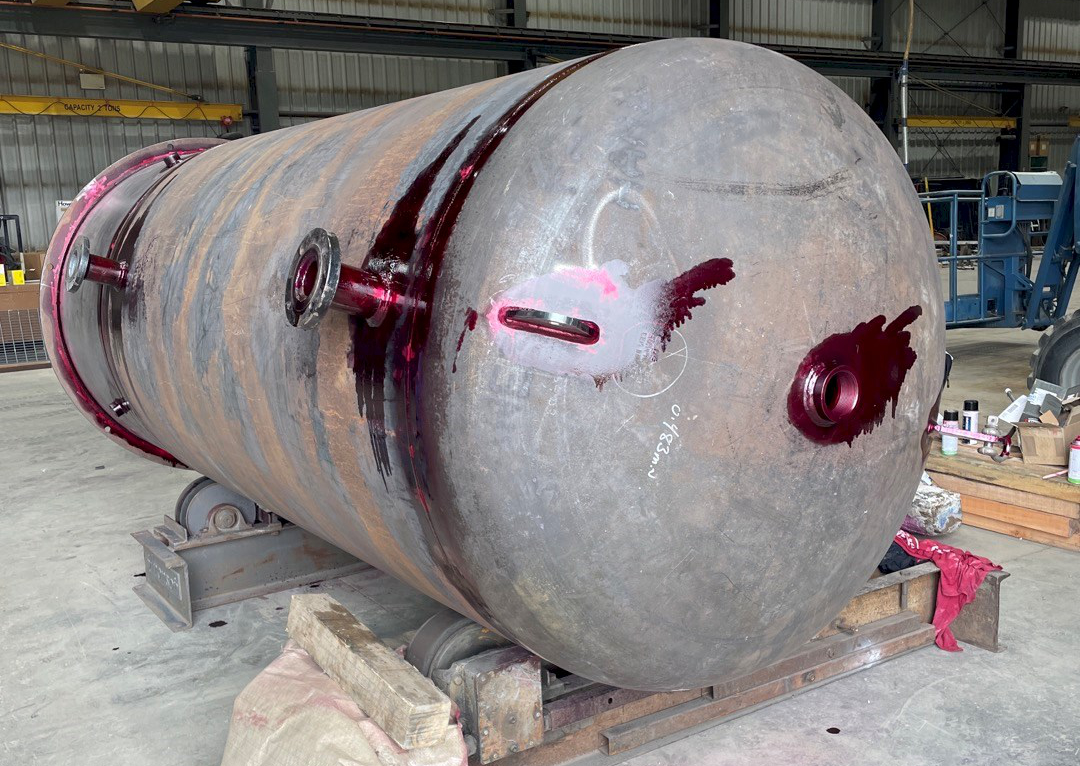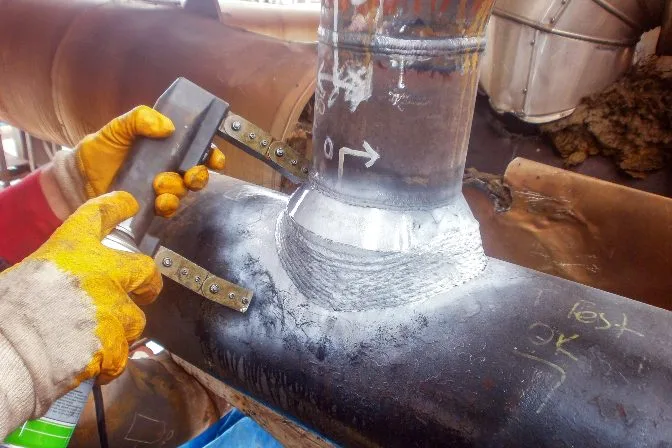Comprehensive Overview to Tank Welding Inspection for Safety And Security and Top quality
Comprehensive Overview to Tank Welding Inspection for Safety And Security and Top quality
Blog Article
The Vital Function of Storage Tank Welding Inspection in Ensuring Structural Integrity and Safety And Security Compliance in Industrial Applications
In the world of commercial applications, tank welding evaluation arises as a pivotal component in safeguarding architectural honesty and guaranteeing compliance with safety policies. Using a combination of methods such as aesthetic evaluations and advanced testing methods, these inspections serve to determine and alleviate potential defects prior to they rise right into substantial dangers.
Value of Tank Welding Assessment

Making sure compliance with industry criteria and laws is one more considerable element of container welding assessment. Governing bodies mandate stringent standards for the construction and maintenance of tank, and comprehensive examinations aid companies follow these needs. Non-compliance can lead to extreme penalties, including penalties and closures, even more emphasizing the demand for strenuous assessment methods.
Additionally, container welding inspection plays a vital function in maintaining functional efficiency. In recap, the significance of tank welding assessment lies in its capability to guard public wellness, secure the environment, and make certain compliance with regulative frameworks.
Secret Examination Techniques
Effective storage tank welding examination counts on a range of key techniques that make sure complete analysis of weld top quality and architectural integrity. Among one of the most widespread techniques are visual assessment, ultrasonic screening, radiographic screening, and magnetic bit screening - Tank Welding Inspection. Each approach offers distinct benefits in analyzing various aspects of the weld
Visual evaluation functions as the initial line of protection, permitting inspectors to identify surface problems, irregularities, or variances in the weld grain. Ultrasonic testing employs high-frequency acoustic waves to detect interior defects, such as fractures or spaces, supplying a thorough analysis of weld stability. This method is specifically reliable in spotting issues that may not be visible externally.
Radiographic testing utilizes X-rays or gamma rays to create pictures of the welds, disclosing interior gaps and offering an irreversible document for future reference. This strategy is extremely reliable for important applications where the risk of failure need to be reduced.
Last but not least, magnetic bit testing is utilized to recognize surface area and near-surface issues in ferromagnetic products. By applying magnetic areas and fine iron fragments, examiners can determine gaps that may jeopardize the structural honesty of the tank. With each other, these techniques create a durable framework for making sure top notch welds in industrial applications.
Compliance With Safety And Security Criteria

Routine evaluations play an essential function in making sure conformity by recognizing possible failures or deviations from prescribed requirements. Examiners are trained to evaluate weld high quality, verify product specifications, and assess the general structural honesty of containers. Their know-how is vital in making sure that welding processes meet the required security criteria.
In addition, conformity with security criteria not only protects workers yet likewise safeguards the atmosphere from possible threats such as leaks or disastrous failings. Organizations that focus on safety and security compliance are better positioned to reduce threats, boost operational performance, and foster a culture of security within their workforce. In summary, maintaining extensive conformity with safety and security criteria is crucial for the effective procedure of container welding activities in commercial setups.
Benefits of Routine Examinations
Regular evaluations are essential to keeping the structural integrity and safety and security of bonded tanks. These evaluations give a systematic technique to identifying possible flaws or weaknesses in the welds, ensuring that any kind of concerns are attended to prior to they intensify right into significant failings. By carrying out normal evaluations, organizations can spot rust, fatigue, and other forms of degeneration that might compromise container efficiency.
Additionally, regular evaluations add to compliance with industry policies and requirements. Sticking to these guidelines not just mitigates legal risks yet additionally enhances the organization's reputation for safety and security and reliability. Normal evaluations cultivate an aggressive security culture, motivating employees to acknowledge and focus on the significance of tools stability.

Instance Researches and Real-World Applications
Situation studies and real-world applications show the substantial impact of efficient storage tank welding evaluation methods. One remarkable example is a big petrochemical facility that encountered considerable functional interruptions as a result of leaks in storage tanks. Adhering to the execution of strenuous welding examination procedures, including visual and ultrasonic testing, the center determined important defects in weld seams that could have resulted in tragic failings. This positive approach not only prevented ecological threats but likewise saved the business millions in prospective clean-up prices and regulatory fines.
Similarly, a water treatment plant applied a detailed inspection program for its storage tank Check This Out welding procedures - Tank Welding Inspection. By including non-destructive testing approaches, the plant was able to find early indicators of rust and tiredness in weld joints. This prompt intervention prolonged the life expectancy of the storage tanks and guaranteed compliance with safety and security laws, thus securing public health
These study highlight the importance of normal and systematic storage tank welding examinations. By focusing on these techniques, industries can minimize threats, enhance structural stability, and ensure conformity with safety and security criteria, eventually leading to improved operational performance and minimized responsibilities.

Final Thought
In conclusion, tank welding inspection site link is a vital element of maintaining structural honesty and safety in commercial applications. Employing different examination techniques makes sure early discovery of possible defects, thus protecting against devastating failings.
Report this page